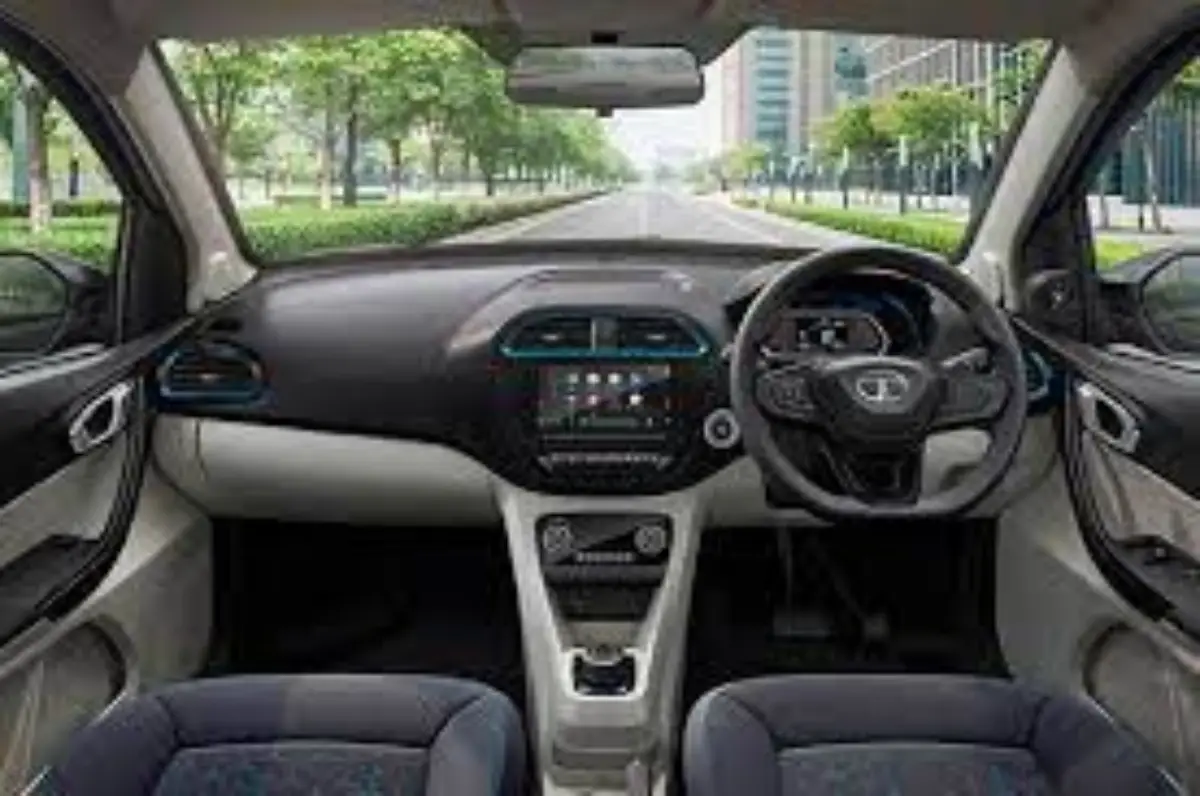Tata Tigor EV: There’s not much that distinguishes the Tigor EV from the Tata Tigor models with internal combustion engines, aside from a few stickers and badges. Its distinctive form is enhanced visually by the coupe-like roofline. The inside of the Tigor EV is also well-done. The cabin is larger than it may seem, the seats are nicely bolstered, and the dashboard is cleverly arranged. That being said, there are a few variations from the typical Tigor. First off, a state of charge dial replaces the tachometer. Additionally, the boot instead of the floor houses the spare wheel, reducing the amount of room for luggage to a meagre 255 litres.
The electric motor of the Tata Tigor EV generates 41 horsepower, which is a respectable amount for a car this size. Although the performance is sufficient to keep up with traffic, after 50 kph the speed buildup stops. Additionally, this car is not appropriate for use on highways due to its 80 kph top speed limit. Although we haven’t completed a full test, we anticipate a real-world range of about 130 to 150 kilometres on a full charge. When using a 15kW DC fast charger, the battery pack can be fully charged to 80% capacity in two hours, compared to 11.5 hours with a wall charger.
Tata Tigor EV: Exterior
The external design of the Tata Tigor EV resembles that of its ICE equivalent. But a few distinctive design features set it apart.
Its exterior features EV-specific blue accents on the rear bumper, alloy wheels, fog lamps and humanity line. Additionally, the front, sides, and back now sport EV badges.
Tata Tigor EV: Interior and Features
Interior: The Tigor EV’s interior features a dual-tone colour scheme, just like its gasoline-powered counterpart. Blue accents can be found near the AC vents and instrument cluster on the inside, just like on the exterior. In addition, a rotary dial is used in place of the gear level.
Features: The 7-inch HARMAN touchscreen infotainment system in the New Tigor EV is compatible with Apple CarPlay and Android Auto. Additional features include multi-mode regen, box USB port, 12V power outlets, automatic climate control, cooled gloves, and more.
Safety: The Tigor EV is equipped with numerous safety features, including cruise control, dual airbags, corner stability control, rear parking sensors, ABS (Anti-Lock Braking System) with EBD (Electronic Brake Force Distribution), and an iTPMS (Tyre Pressure Monitoring System).
Safety features of the Tigor EV include dual airbags, corner stability control, cruise control, rear parking sensors, ABS (Anti-Lock Braking System) with EBD (Electronic Brake Force Distribution), a rear view camera, and an iTPMS (Tyre Pressure Monitoring System), among other things.
Tata Tigor EV: Price and Variants
The price of the 2023 Tata Tigor EV in India ranges from Rs 12.49 lakh to Rs 13.75 lakh (ex-showroom). There are four different variations available.
Tata Tigor EV: Battery Pack and Specifications
An electric motor and a 26 kWh lithium-ion battery pack power the Tigor EV.They generate a peak torque of 170 Nm and 74 bhp of power when combined. Drive and Sport are the two drive modes available.
Tata Tigor EV: Charging
A DC fast charger or a 15A power outlet can be used to charge a Tata Tigor EV. A standard power outlet will take about 9.4 hours to fully charge the sedan, but a DC fast charger can recharge the battery to 80% capacity in just 59 minutes. The manufacturer offers a home charging solution for the car as well.
The vehicle can travel 315 kilometres on a single charge, according to ARAI, which is more than sufficient for short trips and daily commutes.
Tata Tigor EV: Colours Options
The Tata Tigor EV is available in three different colour options. Among them are Magnetic Red, Signature Teal Blue, and Daytona Grey.
Tata Tigor EV: Mileage
With just one full charge, the Tata Tigor EV can travel 315 kilometres.
Tata Tigor EV: Rivals
In the Indian market, the Tata Tigor EV has no direct competitors. However, the Citroen eC3 can be a good substitute given its price range.
Tata Tigor EV Review on You-Tube
Also Read: Zero Emissions, Maximum Efficiency: Honda Activa Electric Arriving by March 2024
Share to Others